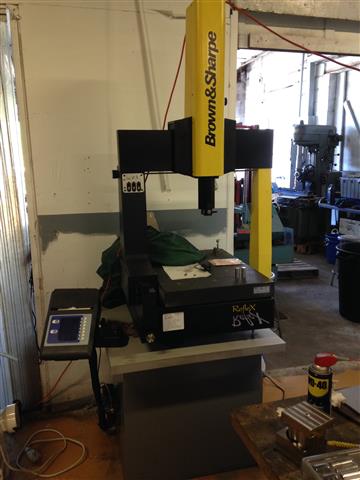mikethezipper
Plastic
- Joined
- Jun 2, 2015
Howdy gentlemen,
I've got a small shop, and I really need to up my game when it comes to inspecting parts. For the record, I'm a job / R&D shop so volume isn't a big issue for me, and the parts I make change frequently. Most parts will be in Al, some stainless, and some delrin or Ultem parts in sizes usually much smaller than an 8"x11".
My problem is that I don't have much money, and I'm not sure what sort of system I should get. I've used OCs before, and I really dislike them for reasons I think should be obvious (blind holes anyone?). I've also used video measurement systems, (in this case the Vertex by Micro-Vu), which I loved, especially compared to the OC. I've never used a CMM.
It looks like I can get a "working" CMM on fleabay in the $6k range. I'm talking about 80s, 90s machine manual machine with software that looks like its running in DOS.
Of course I want something better, but I honestly can't afford to spend more than $10k on any system.
What do ya'll recommend?
-Mike
I've got a small shop, and I really need to up my game when it comes to inspecting parts. For the record, I'm a job / R&D shop so volume isn't a big issue for me, and the parts I make change frequently. Most parts will be in Al, some stainless, and some delrin or Ultem parts in sizes usually much smaller than an 8"x11".
My problem is that I don't have much money, and I'm not sure what sort of system I should get. I've used OCs before, and I really dislike them for reasons I think should be obvious (blind holes anyone?). I've also used video measurement systems, (in this case the Vertex by Micro-Vu), which I loved, especially compared to the OC. I've never used a CMM.
It looks like I can get a "working" CMM on fleabay in the $6k range. I'm talking about 80s, 90s machine manual machine with software that looks like its running in DOS.
Of course I want something better, but I honestly can't afford to spend more than $10k on any system.
What do ya'll recommend?
-Mike



 It was hooked up to a printer that used the paper that had the holes along the edges to feed it, don't remember what it was called. All manual, meaning you used your hands to move the probe head around in all 3 axis, no joystick. I think it had locking levers as well, although it has been more than 10 years since I worked at that shop....
It was hooked up to a printer that used the paper that had the holes along the edges to feed it, don't remember what it was called. All manual, meaning you used your hands to move the probe head around in all 3 axis, no joystick. I think it had locking levers as well, although it has been more than 10 years since I worked at that shop....